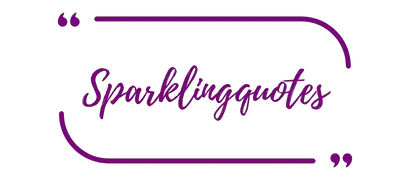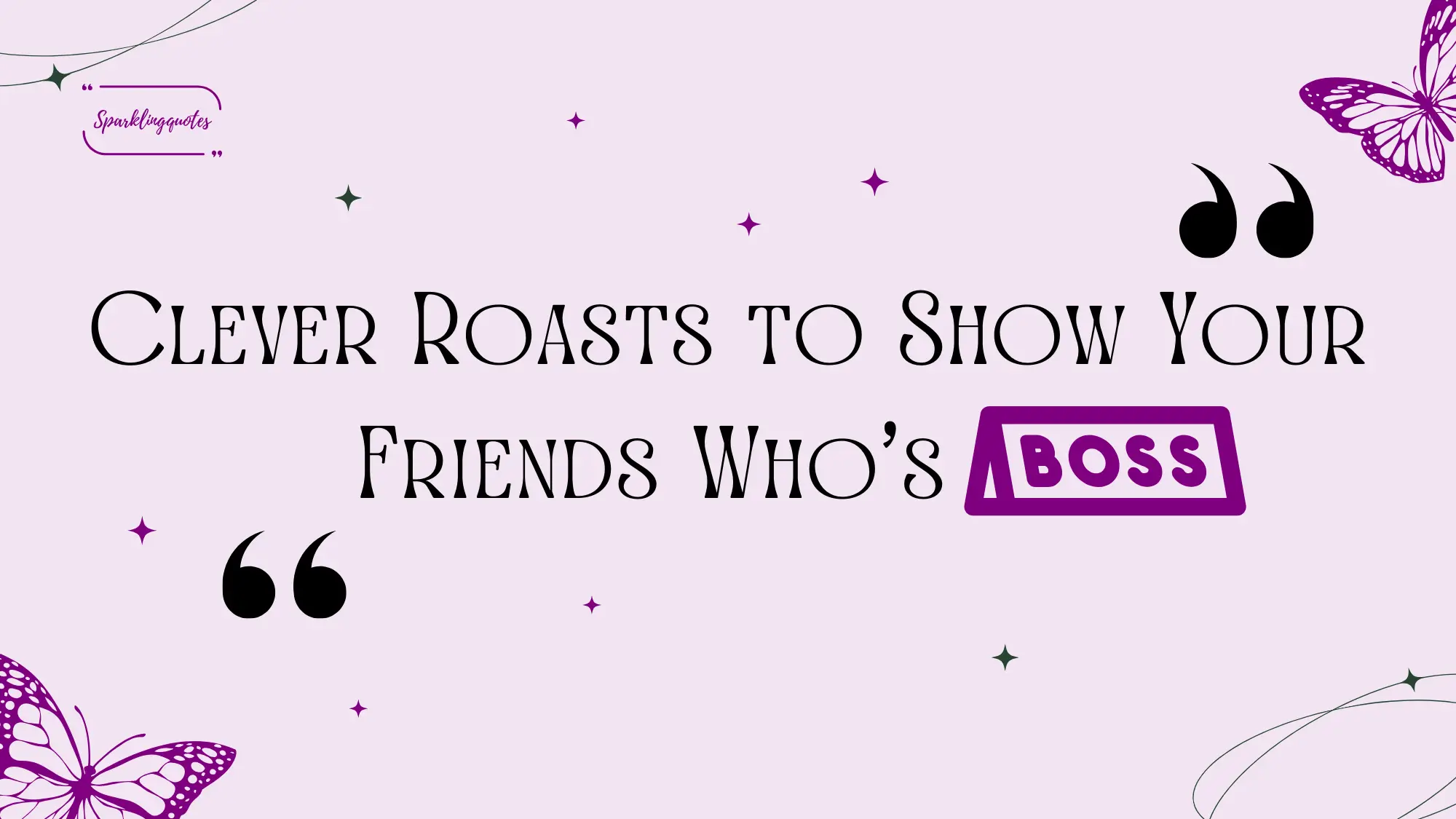Are you ready to become the master of verbal sparring? We have compiled a treasure list of 25+ clever roasts to show your friends who’s boss and cement your status as the quick-witted king or queen of your social circle. Prepare to unleash your inner comedian with our ultimate guide to witty comebacks!
Table of Contents
Whether you are a seasoned jokester or a novice looking to sharpen your tongue, this guide will equip you with an arsenal of clever quips. Get ready to impress your friends, navigate social interactions with confidence, and become the life of the party!
How To Master The Art of Clever Roasts to Show Your Friends Who’s Boss?

Ever wished you had the perfect zinger at the tip of your tongue? You are not alone. The art of witty comebacks is like a superpower in social situations. It’s that clever comeback that leaves everyone in stitches and cements your status as the group’s resident comedian.
But here’s the thing: delivering a savage reply isn’t just about being mean. It’s about timing, creativity, and knowing your audience. Whether you are trading playful jabs with your guy friends or crafting the perfect flirty comeback, mastering this skill can make you the life of any party.
Ready to up your game? Buckle up! We are about to look into a collection of clever words and snarky comments that will have your friends both impressed and slightly terrified of your sharp tongue.
💡 Key Takeaways: Mastering witty comebacks is a valuable social skill that combines timing, creativity, and audience awareness to enhance your social interactions and humor.
The Power of a Good Comeback
Ever been in a situation where you thought of the perfect comeback five hours later? We have all been there. A good comeback is like a secret weapon in your social arsenal. It’s not just about having the last word; it’s about showcasing your quick wit and confidence.
Think about it. When you deliver a great comeback, you are not just responding – you are taking control of the conversation. You are turning the tables, often in a way that leaves everyone laughing (including the person you have just roasted).
The best comebacks aren’t just clever – they are perfectly timed. It’s about striking while the iron is hot, not rehashing old conversations.
💡 Key Takeaways: A well-executed comeback can shift the dynamics of a conversation, demonstrating quick thinking and confidence while entertaining those around you.
The Anatomy of a Savage Roast
What makes a roast truly savage? It’s not just about being mean – it’s about being clever, unexpected, and, dare we say, artful. A brutal insult might sting, but a well-crafted roast? That’s something people remember.
Let’s break it down:
1. Observation: The best roasts are often based on keen observations. It’s about spotting something others might miss.
2. Creativity: Don’t go for the obvious. The more creative, the better.
3. Delivery: Timing is everything. A perfectly timed roast can turn an awkward moment into comedy gold.
4. Relevance: The roast should fit the situation. A random insult isn’t a roast; it’s just mean.
5. Humor: Above all, it should be funny. If people aren’t laughing (including the roastee), you have missed the mark.
The goal isn’t to hurt feelings. It’s to showcase your wit while (ideally) strengthening your bond through shared laughter.
💡 Key Takeaways: A successful savage roast combines keen observation, creativity, perfect timing, relevance, and humor to create a memorable and entertaining moment.
25+ Clever Roasts to Show Your Friends Who’s Boss
Ready to arm yourself with a arsenal of witty comebacks? Here’s a big list of perfect comebacks for various situations. Remember, it’s all about delivery and context!
1. Observational Roasts
These roasts are all about spotting the little details and turning them into comedy gold.
1. “Is that your hair, or did a mop just die on your head?”
2. “I’d agree with you, but then we’d both be wrong.”
3. “You are like a cloud. When you disappear, it’s a beautiful day.”
4. “I’m not saying you are dumb, but you got fired from a M&M factory for throwing out all the W’s.”
5. “If you were any more inbred, you’d be a sandwich.”
2. Exaggeration Roasts
Sometimes, the best way to make a point is to blow it way out of proportion.
6. “Your ego is so big, it has its own gravitational pull.”
7. “I’d insult you, but I’m afraid I wouldn’t do as well as nature did.”
8. “You are so slow, you came in fifth in a three-legged race.”
9. “If ignorance is bliss, you must be the happiest person alive.”
10. “You are so dense, light bends around you.”
3. Pop Culture Roasts
These roasts tap into shared cultural knowledge for maximum impact.
11. “You are about as useful as a screen door on a submarine.”
12. “I have seen more life in a cemetery than in your personality.”
13. “You are like Rapunzel, except instead of letting down your hair, you let down everyone in your life.”
14. “You must have been born on a highway because that’s where most accidents happen.”
15. “If you were a spice, you’d be flour.”
4. Self-Deprecating Roasts
Sometimes, the best way to roast someone is to roast yourself first.
16. “Between you and me, I’m starting to think I might be the smart one.”
17. “I may be ugly, but at least I’m… wait, I don’t have a good end to this.”
18. “I’m not saying I’m Batman, I’m just saying no one has ever seen me and Batman in the same room.”
19. “I’m not saying your opinion is worthless, but if we were on Who Wants to Be a Millionaire, I wouldn’t phone you.”
20. “I may not be perfect, but at least I’m not you.”
5. Backhanded Compliment Roasts
These roasts start sweet but end with a sting.
21. “You are so pretty! It’s a shame you can’t Photoshop your personality.”
22. “I love how you don’t care what anyone thinks about you. Especially when it comes to personal hygiene.”
23. “You have a face for radio and a voice for silent films.”
24. “You are so good at multitasking. You can talk and annoy me at the same time!”
25. “I wish I could see myself through your eyes. I’d finally know what mediocrity looks like.”
The key to a great comeback is not just what you say, but how and when you say it. Practice these, but also learn to craft your own based on the situation. And always, always read the room!
💡 Key Takeaways: A diverse repertoire of comebacks, ranging from observational to self-deprecating, equips you for various social situations, but delivery and context are crucial for their effectiveness.
When to Use Your Clever Roasts to Show Your Friends Who’s Boss?
Timing is everything when it comes to witty comebacks. It’s like comedy – deliver the punchline too early or too late, and you have lost your audience. So, how do you nail the timing?
1. Read the Room
Before you unleash that savage reply, take a quick read of the room. Is everyone in a playful mood? Or are tensions high? Your hilarious roast might not land well if someone’s already having a bad day.
2. Watch for Openings
In casual conversation, look for natural pauses or moments when someone’s finished speaking. That’s your cue to jump in with your clever response.
3. Body Language Matters
Pay attention to body language meaning. If someone’s looking uncomfortable or defensive, it might not be the best time for a roast. Wait for open, relaxed postures.
4. Don’t Interrupt
Remember, the middle of my sentence interrupt is not a good look. Wait for your turn to speak. A well-timed comeback after a brief pause can be more effective than rushing to get your words out.
5. Practice Makes Perfect
Like any skill, timing improves with practice. Start with close friends who know your humor, and gradually expand your audience as you get more comfortable.
💡 Key Takeaways: Mastering the timing of witty comebacks involves reading the room, watching for conversational openings, interpreting body language, avoiding interruptions, and consistent practice.
How To Balance Humor and Respect While Roasting?
Roasting is an art form, and like any art, it requires finesse. The goal is to make people laugh, not to hurt feelings. So how do you walk that fine line?
1. Know Your Audience
What’s hilarious to one person might be deeply offensive to another. Before you unleash your mix of clever comebacks, make sure you know who you are dealing with.
2. Punch Up, Not Down
The golden rule of comedy applies here: punch up, not down. Target the powerful, not the vulnerable. It’s funnier and more respectable.
3. Self-Deprecation is Key
If you can laugh at yourself, others will be more receptive to your jokes about them. Start with a self-roast before turning your wit on others.
4. Avoid Sensitive Topics
Steer clear of topics like race, religion, or personal tragedies. These are rarely funny and often cross the line into offensive territory.
5. Read the Response
If someone looks hurt or angry after your roast, apologize sincerely. A good roast should leave everyone laughing, including the person being roasted.
Remember, the best roasts come from a place of affection, not malice. If you are genuinely trying to hurt someone, it’s not a roast – it’s just being mean.
💡 Key Takeaways: Successful roasting requires understanding your audience, targeting appropriate subjects, incorporating self-deprecation, avoiding sensitive topics, and being responsive to others’ reactions to maintain a balance between humor and respect.
How To Adapt Your Comebacks to Different Audiences?
One size doesn’t fit all when it comes to comebacks. What works with your guy friends might not fly in a professional setting. So, let’s break down how to adapt:
1. With Close Friends
Go all out! This is your safe space to test your most savage insults. Your buddies can handle it, and they will dish it right back.
2. In Professional Settings
Tread carefully. Keep it light, focus on work-related jokes, and avoid anything too personal. A clever wordplay about the company’s latest project? Perfect.
3. With Acquaintances
Stick to mild teasing. You don’t know them well enough for the really juicy stuff. Think more “playful banter” than “brutal takedown.”
4. On Social Media
Remember, tone doesn’t always translate online. What seems like a funny comeback might read as a nasty comment. When in doubt, add an emoji on social media platforms like Facebook and Instagram or you can say “just kidding” to clarify.
5. For Flirty Situations
Flirty comebacks are a whole different ball game. They should be light, fun, and slightly self-deprecating. The goal is to create a playful back-and-forth, not to shut someone down.
💡 Key Takeaways: Effective comebacks require adapting your approach based on your relationship with the audience, considering the setting, and adjusting your tone and content accordingly.
How To Craft Your Own Witty Comebacks: Tips and Tricks
Ready to graduate from using pre-made comebacks to crafting your own? Here’s your step-by-step guide to becoming a comeback connoisseur:
1. Observe and Listen
Pay attention to the people around you. The best comebacks often play off something specific someone has said or done.
2. Think Laterally
Don’t go for the obvious. Try to make unexpected connections. If someone says they are as fit as a fiddle, you might quip, “Yeah, and about as useful in a gym.”
3. Use Wordplay
Puns and double meanings can be comedy gold. If someone complains about being tired, you could say, “Well, you are pretty exhausting.”
4. Practice Improvisation
Try some improv exercises. They will help you think on your feet and respond quickly in conversations.
5. Study the Masters
Watch stand-up comedians or witty TV characters. Notice how they construct their jokes and comebacks.
6. Keep It Short and Sweet
The best comebacks are often short and punchy. Don’t ramble – get to the punchline quickly.
Remember, crafting the perfect comeback is a skill that takes time to develop. Don’t be discouraged if your first attempts fall flat. Keep at it, and soon you will be known for your razor-sharp wit!
💡 Key Takeaways: Developing your own witty comebacks involves keen observation, lateral thinking, wordplay, improvisation practice, studying skilled comedians, and keeping responses concise and impactful.
The Psychology Behind Effective Roasts

Ever wonder why some roasts leave everyone in stitches while others fall flat? It’s all about psychology. Let’s dive into the mind games behind a great comeback:
1. Surprise Factor
Our brains love novelty. An unexpected twist in a roast tickles our surprise centers, making it funnier.
2. Social Bonding
Believe it or not, friendly roasting can strengthen relationships. It’s a way of saying, “We are close enough that I can tease you.”
3. Cognitive Dissonance
When a roast presents two conflicting ideas (like a backhanded compliment), our brains get a kick out of resolving the contradiction.
4. Superiority Theory
There’s a tiny part of us that enjoys feeling superior. A clever roast can tap into this, but be careful – push it too far, and it becomes mean-spirited.
5. Timing and Context
A roast that perfectly fits the moment is psychologically satisfying. It shows social awareness and quick thinking.
Understanding these psychological elements can help you craft comebacks that not only amuse, but also resonate on a deeper level.
💡 Key Takeaways: Effective roasts leverage psychological principles like surprise, social bonding, cognitive dissonance, and contextual relevance to create humor and strengthen relationships.
How To Use Comebacks to Navigate Social Interactions?
Witty comebacks aren’t just for laughs – they are powerful tools for social navigation. Here’s how to use them effectively:
1. Defusing Tension
A well-timed joke can break the ice in tense situations. Just keep it light and self-deprecating.
2. Asserting Yourself
Clever comebacks can help you stand your ground without being aggressive. They show you are quick-witted and not easily pushed around.
3. Building Rapport
Trading playful jabs can fast-track friendships. It’s a way of saying, “Hey, we are on the same wavelength.”
4. Redirecting Conversations
Use a witty response to steer a conversation away from uncomfortable topics. It’s smoother than an abrupt subject change.
5. Showing Confidence
The ability to take a joke and fire back shows you are secure and fun to be around. It’s attractive in both friendships and romantic situations.
Remember, the goal is to enhance social interactions, not dominate them. Use your powers for good!
💡 Key Takeaways: Strategic use of witty comebacks can help navigate social situations by defusing tension, asserting oneself, building rapport, redirecting conversations, and demonstrating confidence.
The Impact of a Well-Timed Roast on Friendships
Believe it or not, a good roast can be the secret ingredient to a lasting friendship. Here’s why:
1. Builds Trust
When you can trade insults and laugh about it, it shows a deep level of trust and understanding.
2. Creates Inside Jokes
Those savage replies often become legendary stories, strengthening your bond over time.
3. Shows Affection
In many friendships, especially among guys, playful insults are a way of saying “I care about you” without getting mushy.
4. Encourages Wit
Friends who roast each other often push each other to be quicker and funnier, leading to lots of good times.
5. Eases Tension
Sometimes, a well-timed roast can diffuse a tense situation, turning potential conflict into laughter.
The key is that everyone’s in on the joke and having a good time. If it starts feeling mean-spirited, it’s time to dial it back.
💡 Key Takeaways: Well-executed roasts can strengthen friendships by building trust, creating shared experiences, demonstrating affection, encouraging wit, and easing tensions within the group.
How To Avoid Offensive Territory: Roasts That Go Too Far
While a good roast can be hilarious, it’s crucial to know where to draw the line. Here’s how to keep your comebacks funny without crossing into offensive territory:
1. Avoid Personal Insecurities
If you know someone’s sensitive about their weight, looks, or intelligence, steer clear of these topics.
2. Steer Clear of Family
Jokes about someone’s family, especially parents, are often a no-go zone.
3. Don’t Punch Down
Avoid making fun of someone’s misfortunes or circumstances they can’t control.
4. Watch for Reactions
If someone’s laugh seems forced, or they look hurt, you have probably gone too far. Apologize sincerely.
5. Know Your Audience
What’s funny to one friend group might be deeply offensive to another. Always consider your audience.
The goal is to make people laugh, not to make them feel bad. If you are unsure, err on the side of caution.
💡 Key Takeaways: To avoid offensive roasts, steer clear of personal insecurities, family-related jokes, and punching down, while being attentive to reactions and considering your audience.
How To Master the Art of the Quick-Fire Response?

The ability to fire off a witty comeback at lightning speed is a skill that will serve you well in any social circle. Here’s how to hone your quick-fire response:
1. Stay Present
Half the battle is paying attention. Stay engaged in conversations so you are ready to pounce.
2. Practice, Practice, Practice
Like any skill, quick responses improve with practice. Start with close friends who won’t judge your misfires.
Conclusion
As we have gone through the art of clever roasts to show your friends who’s boss, remember that mastering this skill is about more than just delivering clever lines. It’s about developing connections, brightening someone’s day with laughter, and navigating social situations with confidence and humor. The 25+ clever roasts to show your friends who’s boss, we have explored are your treasure of wit, ready to be unleashed at the perfect moment.
But remember, timing is everything. A well-timed, playful comeback can strengthen friendships and liven up any conversation. However, always be mindful of your audience and the situation. The key is to balance humor with respect, ensuring your witty remarks bring joy, not harm.
So go forth, armed with these savage replies and clever words. Practice, adapt, and create your own unique style. Whether you are bantering with guy friends or crafting a flirty comeback, let your wit shine. After all, laughter truly is the best medicine, and a good roast, delivered with a dash of charm, might just be the perfect prescription for any social circle.

